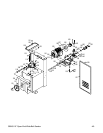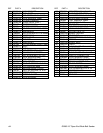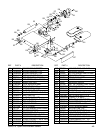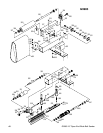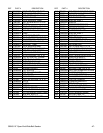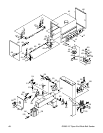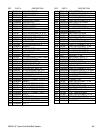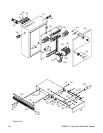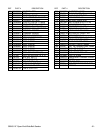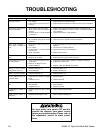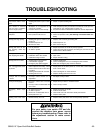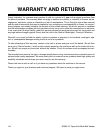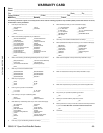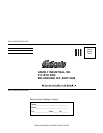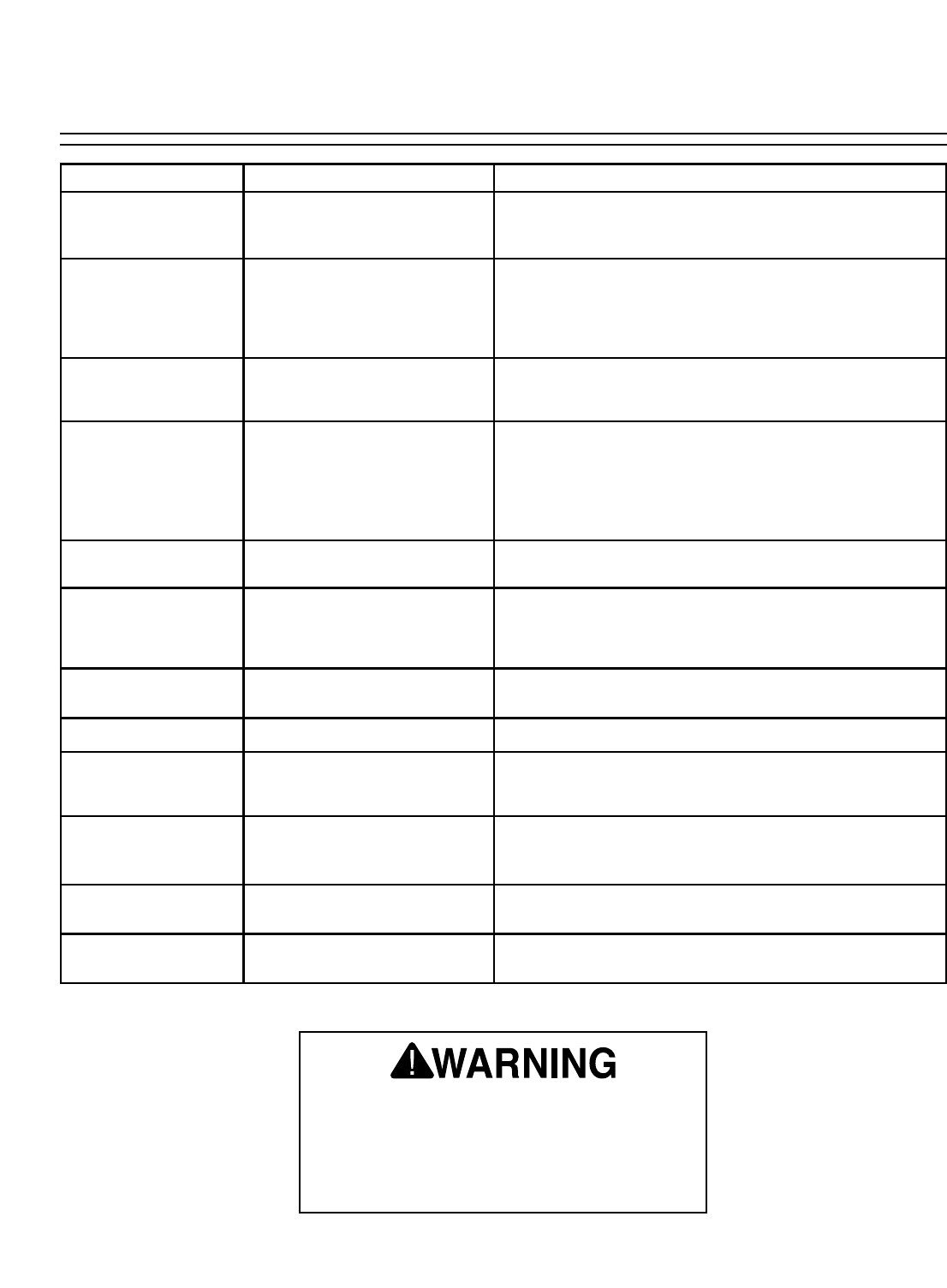
-52- G9983 15" Open-End Wide-Belt Sander
For your safety, turn switch OFF and dis-
connect the machine from power source
before any troubleshooting. Please refer to
the adjustment section to make correc-
tions.
TROUBLESHOOTING
SYMPTOM
Motor will not start.
Motor will not start; fuses or
circuit breakers blow.
Motor overheats.
Motor stalls (resulting in
blown fuses or tripped cir-
cuit).
Machine slows when oper-
ating.
Loud, repetitious noise com-
ing from machine
Machine is loud, overheats
or bogs down in the cut.
Edges of wood are rounded.
Uneven thickness from left
to right of board.
Workpiece slips on feed
belt.
Straight strip of notches on
workpiece.
Snake shaped marks on
workpiece.
POSSIBLE CAUSE
1. Low voltage.
2. Open circuit in motor or loose con-
nections.
1. Short circuit in line cord or plug.
2. Short circuit in motor or loose con-
nections.
3. Incorrect fuses or circuit breakers
in power line.
1. Motor overloaded.
2. Air circulation through the motor
restricted.
1. Short circuit in motor or loose con-
nections.
2. Low voltage.
3. Incorrect fuses or circuit breakers
in power line.
4. Motor overloaded.
1. Feed rate too high.
2. Depth of cut too great.
1. Pulley set screws or keys are miss-
ing or loose.
2. Motor fan is hitting the cover.
3. V-belt is defective.
1. Excessive depth of cut.
2. Dull sanding belt.
1. Excessive depth of cut.
1. Feed table not parallel to sanding
roller.
2. Feed belt is worn.
1. Pressure rollers set too high.
2. Dirty feed belt.
3. Feed belt is worn.
1. Pressure rollers are dirty or dam-
aged.
1. Sanding belt damaged or dirty.
CORRECTIVE ACTION
1. Check power line for proper voltage.
2. Inspect all lead connections on motor for loose or open connections.
1. Inspect cord or plug for damaged insulation and shorted wires.
2. Inspect all connections on motor for loose or shorted terminals or
worn insulation.
3. Install correct fuses or circuit breakers.
1. Reduce load on motor.
2. Clean out motor to provide normal air circulation.
1. Inspect connections on motor for loose or shorted terminals or worn
insulation.
2 Correct the low voltage conditions.
3. Install correct fuses or circuit breakers.
4. Reduce load on motor.
1. Feed workpiece slower and watch load meter.
2. Reduce depth of cut and watch load meter.
1. Inspect keys and set screws. Replace or tighten if necessary.
2. Tighten fan or shim cover.
3. Replace V-belt. See Maintenance section.
1. Decrease depth of cut.
2. Replace sanding belt.
1. Reduce depth of cut.
1. Adjust the table.
2. Replace feed belt.
1. Lower pressure rollers.
2. Clean feed belt.
3. Replace feed belt.
1. Clean or repair pressure rollers.
1. Clean or replace sanding belt.



